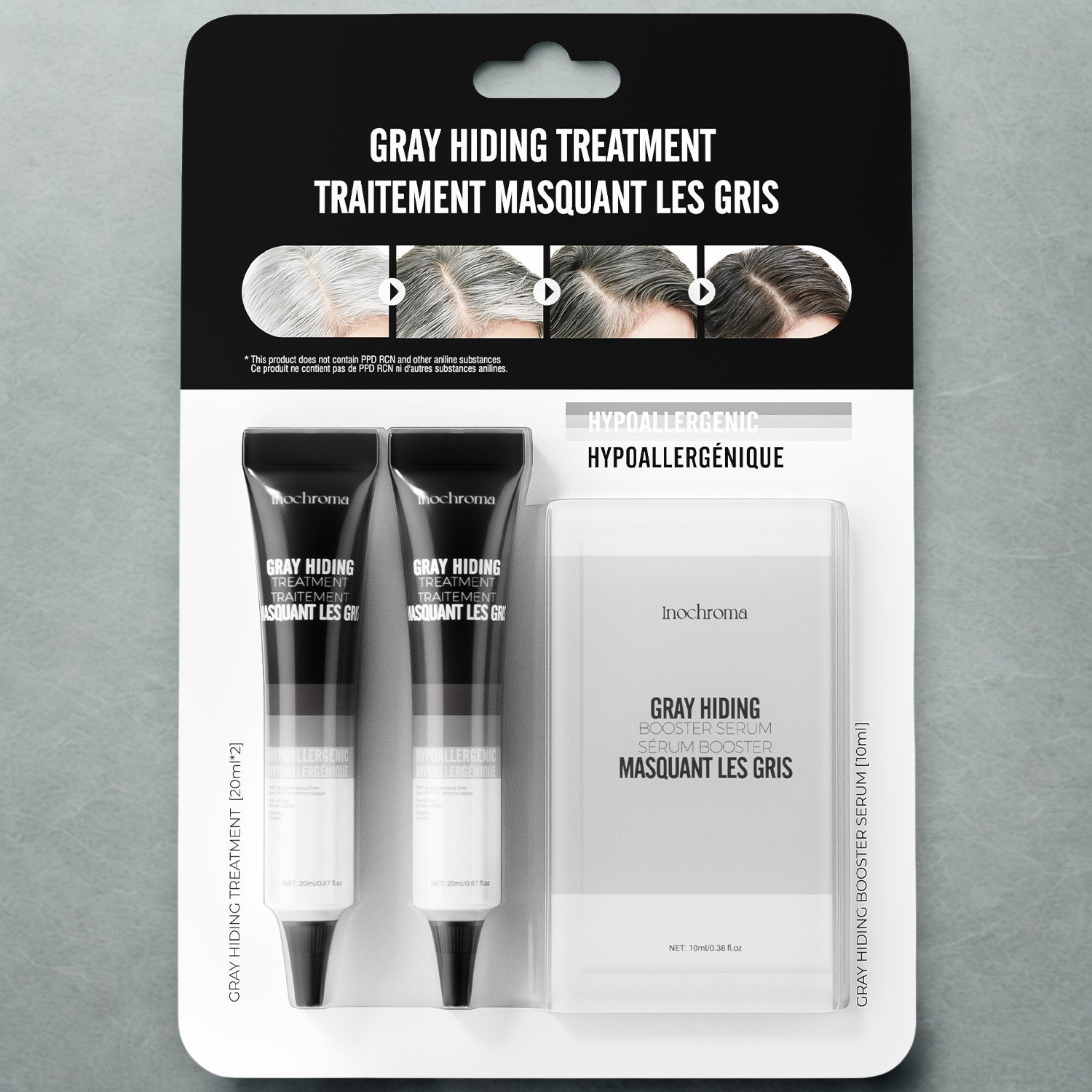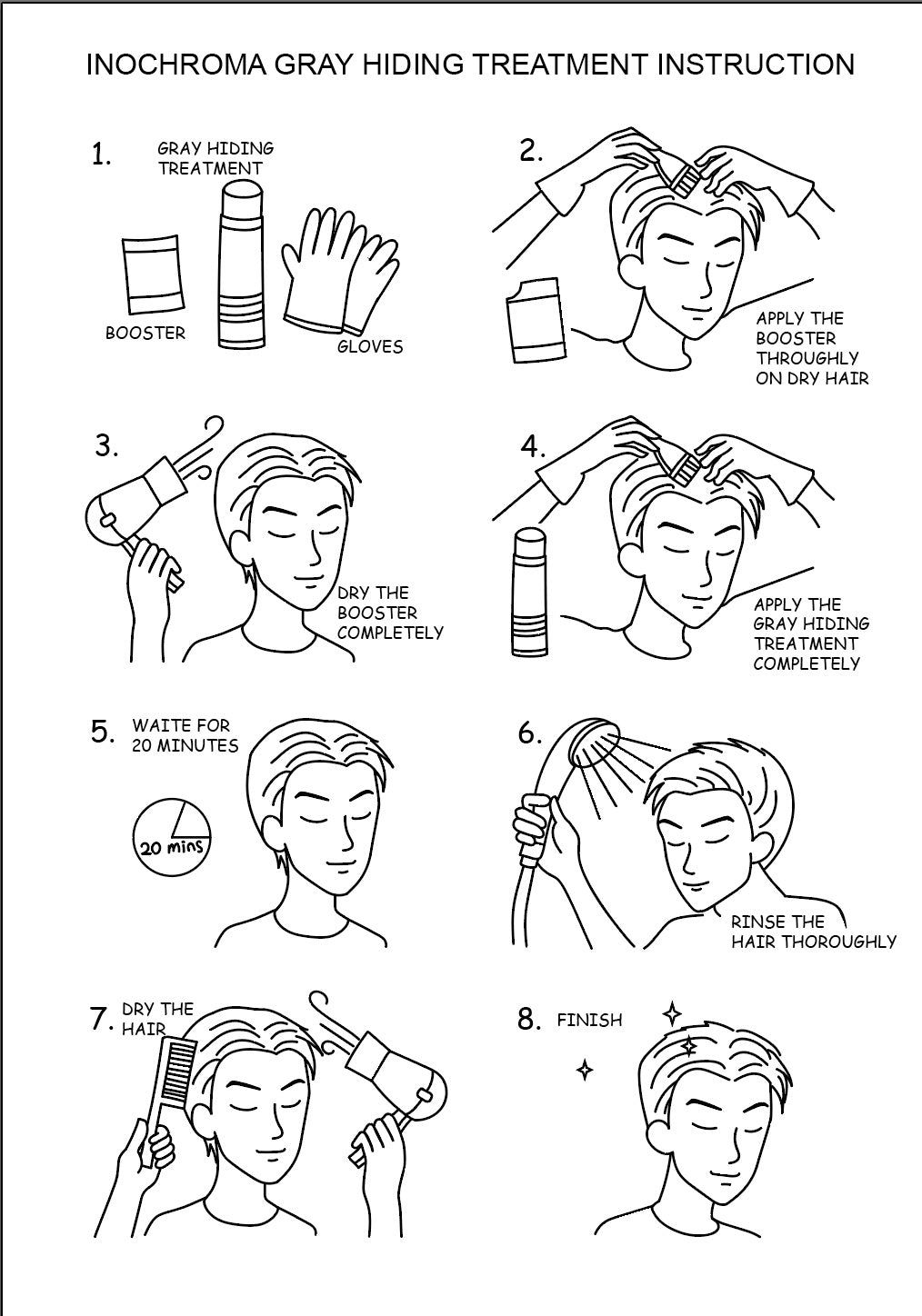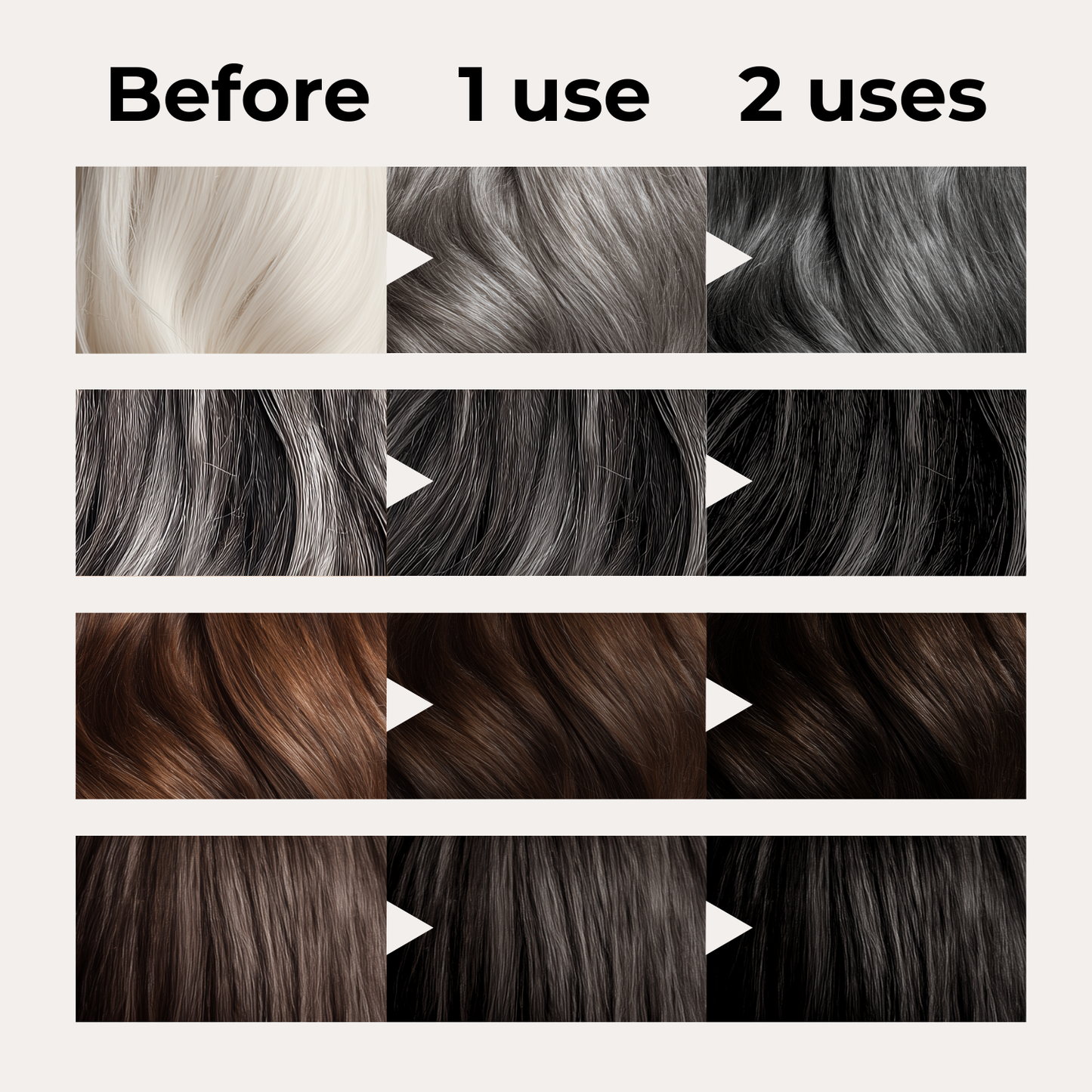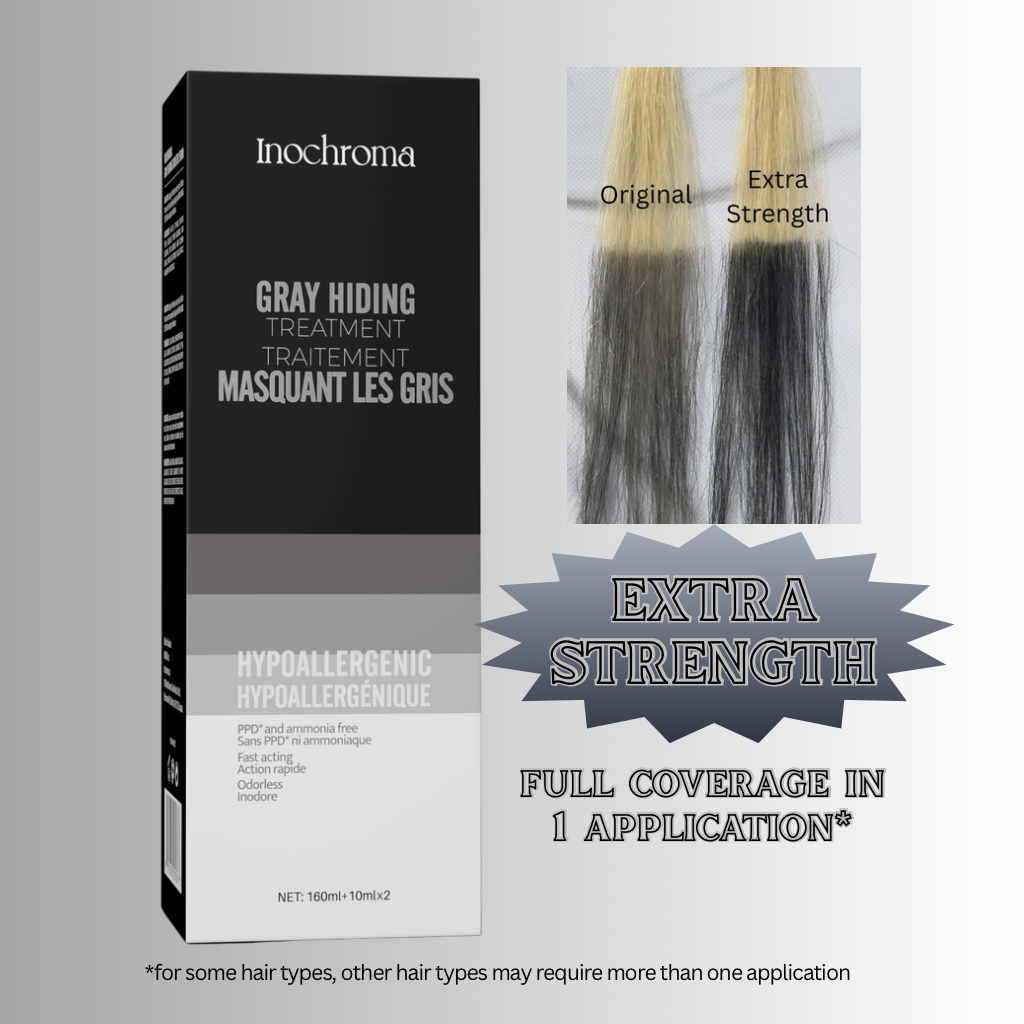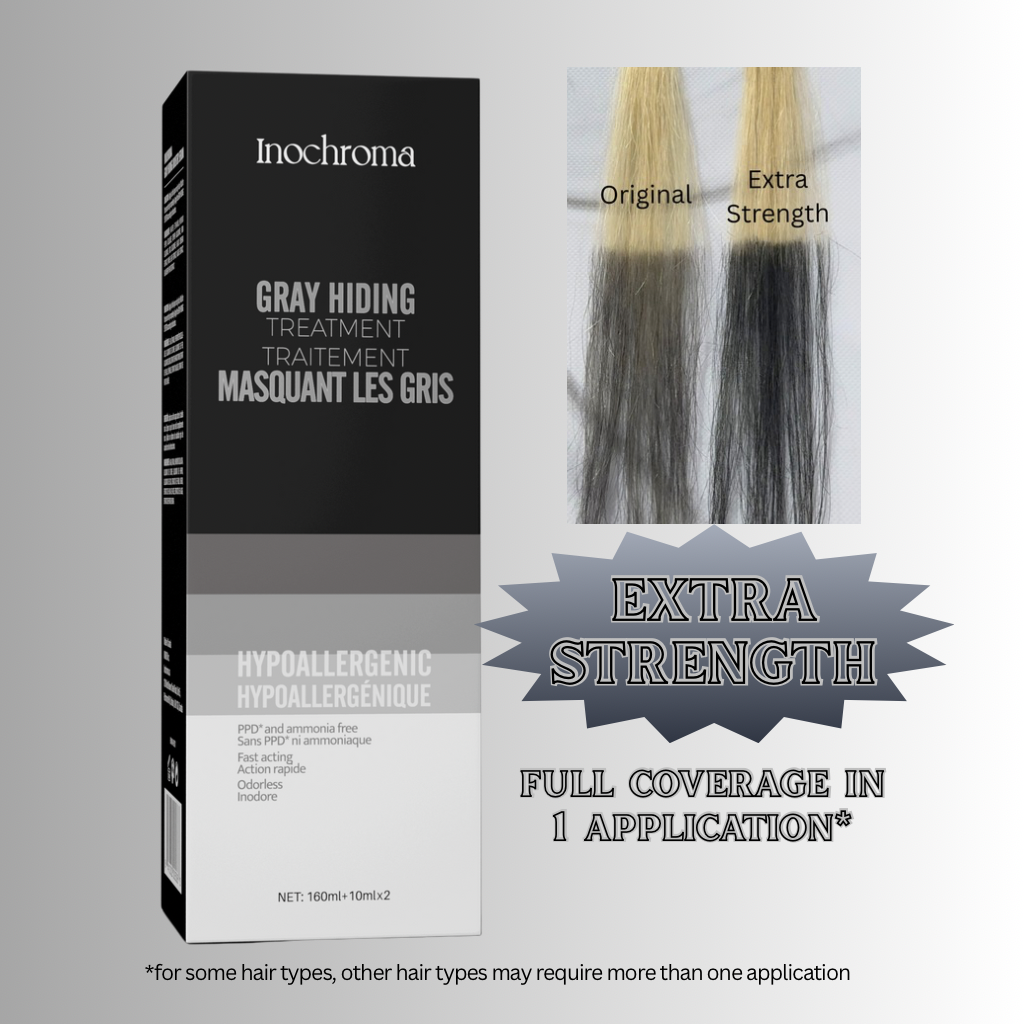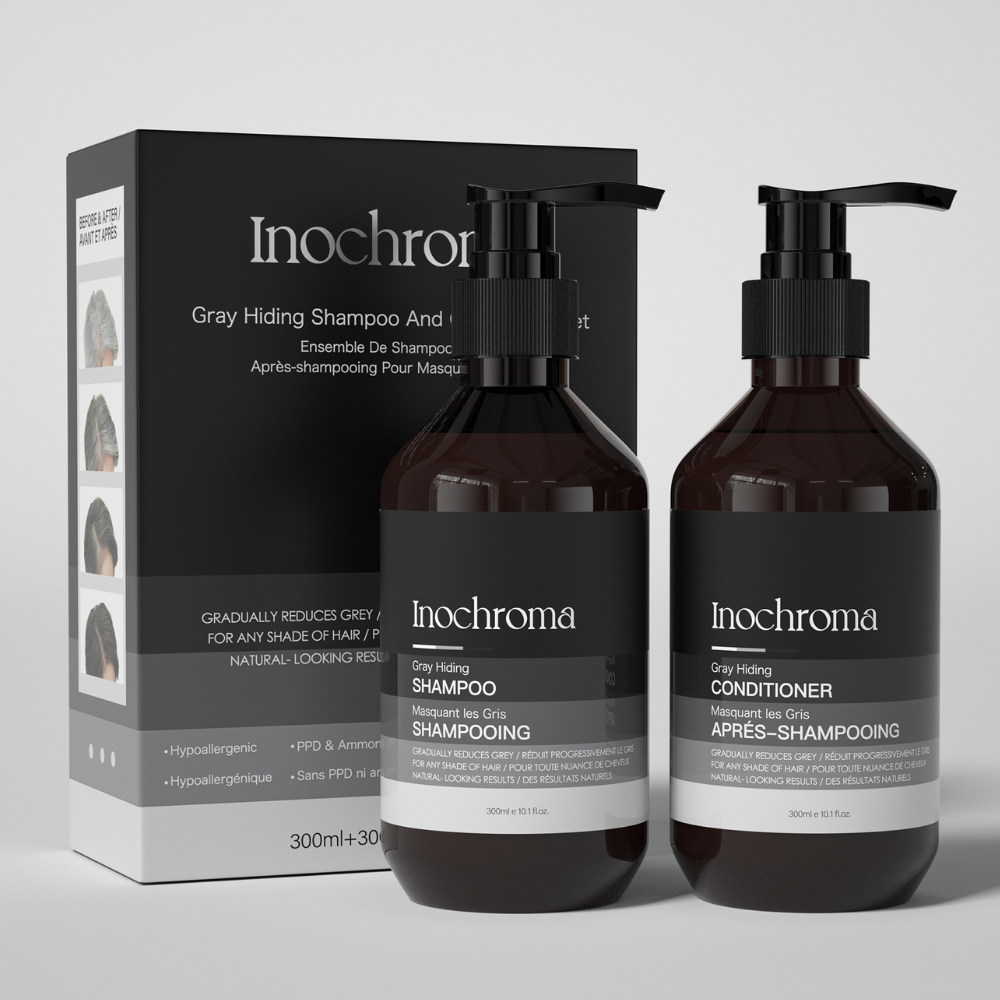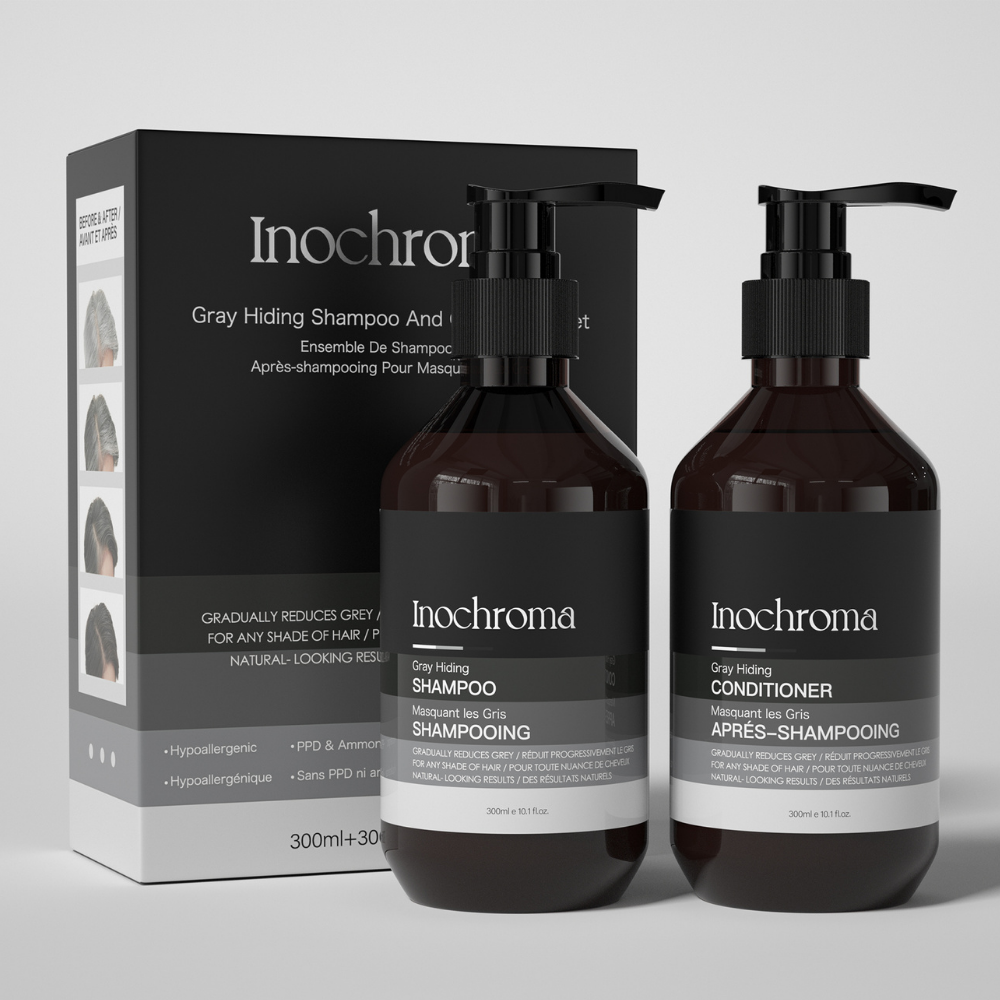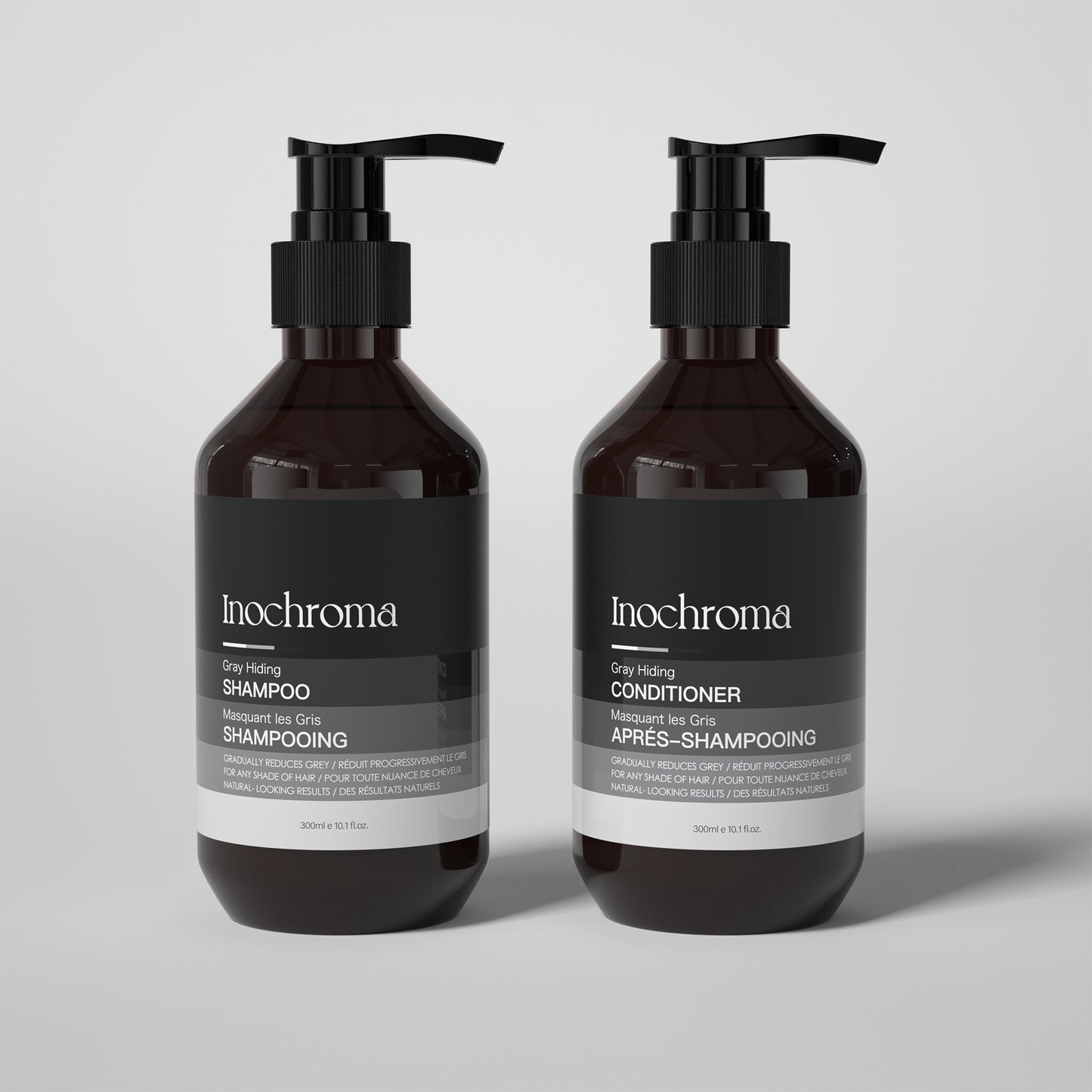Sensitive Scalp? Try Gentle Hair Color Options
Does hair color sting, itch, or feel tight? You may have a sensitive scalp. You can still color your hair. Choose gentler systems. Keep exposure short. Always run a 24-hour patch test before use.
What usually irritates a sensitive scalp
- High-alkaline lift and long processing times.
- Strong fragrance or heavy solvents.
- Dye bases linked with contact dermatitis.
- Thick layers sitting on the hairline and parting.
Gentle hair color families (scalp-friendly first)
1) Deposit-only, no-mix creams
Great for hair dye for sensitive scalp. These are ammonia-free, often PPD-free, and low-odor. They tint only visible greys, so results look natural.
- Best for: grey blending, quick root touch-ups, first-time users.
- Expect: Soft fade in 2–4 washes. No harsh lines.
- Try: Inochroma Grey Hiding Treatment (PPD-free, ammonia-free, no-mix).
2) Semi-permanent, PPD-free tints
These enhance tone and shine with minimal scalp stress. Many are hypoallergenic hair dye styles.
- Best for: Tone refresh, shine boosts, sensitive users.
- Expect: Gradual fade. Reapply when greys peek through.
3) Color-depositing shampoo/conditioner
Daily care that adds a hint of tone. Useful between salon visits.
- Best for: color depositing shampoo for sensitive scalp.
- Expect: Very soft blending. Works as maintenance.
4) Low-lift, ammonia-free oxidative color
For users who need more coverage yet want comfort.
- Best for: Uniform roots with minimized odor.
- Note: Patch-test is essential. Keep timing short.
5) Transfer-resistant touch-up sticks or powders
Zero-mix, targeted, and fast.
- Best for: Hairline, parting, and travel.
- Expect: Temporary effect. Shampoo removes it.
Quick comparison
| Option | Grey strategy | Scalp comfort | Longevity | Notes |
|---|---|---|---|---|
| Deposit-only, no-mix | Blend visible greys | Highest | 2–4 washes | PPD-free, ammonia-free, low-odor |
| Semi-permanent | Tone + shine | High | 3–8 washes | Good for first-timers |
| Color-depositing care | Maintain blend | Very high | With each wash | Great between touch-ups |
| Ammonia-free oxidative | More coverage | Medium | Longer | Keep timing short; patch-test |
Dermatologist-style patch test (24 hours)
- Pick inner forearm or behind the ear. Clean and dry.
- Apply a pea-size amount with a swab. Let it set.
- Do not wash the area for 24 hours.
- Watch for burning, redness, or persistent itch.
- Rinse gently at 24 hours. If reactive, do not use.
Application rules for a sensitive scalp
- Work on dry, detangled hair. Keep layers thin.
- Target the parting, temples, and hairline only.
- Time the first pass for 5–8 minutes.
- For resistant greys, add a second 3–5 minute pass.
- Rinse well. Let hair dry fully to reduce transfer.
Shade selection for natural results
- Match depth first. Adjust tone lightly.
- If unsure, start slightly lighter. Build slowly.
- Dark bases: try natural black or dark brown no-mix.
- Medium to light bases: neutral-warm often blends better.
Routine and maintenance
- Touch-up every 7–10 days for fresh roots.
- Use a non-stripping cleansing shampoo.
- Condition lightly for slip and comfort.
- Mid-week, use a color-depositing product if needed.
Trusted starting point
Want a gentle start? Try Inochroma Grey Hiding Treatment. It is PPD-free, ammonia-free, and a no-mix cream for grey blending. Pair it with our Shampoo & Conditioner Set for scalp comfort.
FAQ
Will gentle color fully cover grey hair?
Deposit-only systems blend greys. They look soft and natural. For full uniform coverage, seek a colorist and keep exposures short.
How long do results last on a sensitive scalp routine?
Most users see 2–4 washes. Because it fades gradually, you avoid harsh lines.
Can I use these options if I had reactions before?
Use PPD-free, ammonia-free, and fragrance-free choices. Patch-test every new brand or shade.
This article is for cosmetic guidance only. It is not medical advice. Consult a dermatologist for persistent scalp issues or severe allergies.


